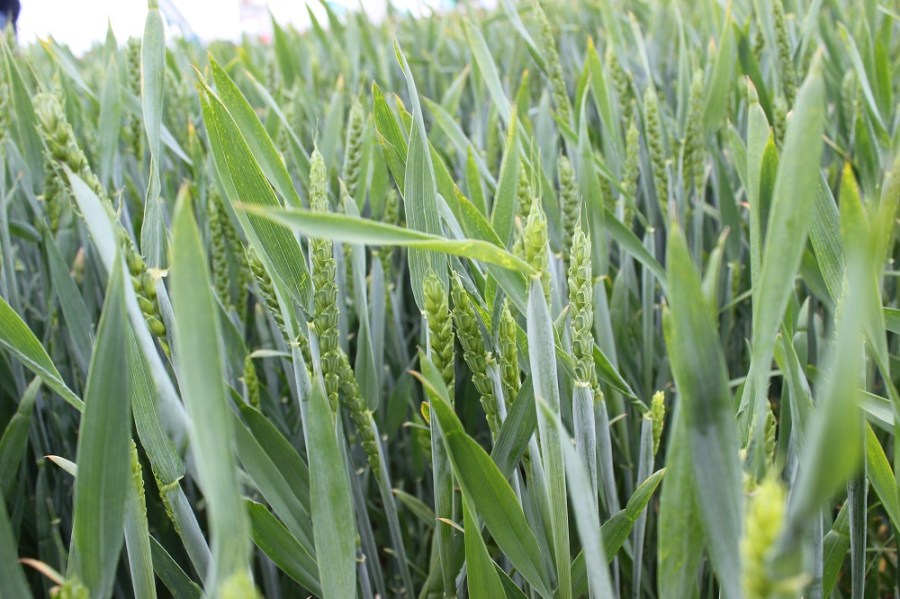Second wheat yields have topped 11 t/ha for a Yorkshire grower, which he believes are down to a no-till approach.
The variety, Evolution, yielded almost as much in the second wheat slot as it did as a first wheat on Rawcliffe Bridge Farm, near Goole, and Richard Hinchliffe puts this down to healthier soils as a result of adopting a no-till regime on the farm back in 2012.
“There was only a difference in a tonne between our first and second wheat yields from Evolution – both of which were higher than average for the season in this area, and if we had had more sunlight later in the summer, we could easily have been looking at yields such as those in 2015,” he says.
“The only downside was our second wheats had a lower bushel weight of 72-74 kg/hl, whereas with the first wheats it was up to 76 kg/hl.”
“Our focus here is to grow the biggest heap of grain we can get; milling wheats don’t do well on these silty loam soils, so we are always looking to push yields.”
On the basis of looking for ways to improve farm productivity, Mr Hinchliffe first began experimenting with no-till back in 2012, and now the whole farm is under a no-till system.
“We gave up ploughing about 16 years ago, and went to a min-till system and this seemed to work well. However we thought we could go even further and decided to try one field out under a no-till system with a new John Deere direct drill that we had just bought.”
“We started to see the benefits of no-till straight away as the ‘tester’ field soon turned out to be our best field.”
He highlights benefits such as; improved water penetration, increased worm numbers and better rooting. “All of which it make it much easier to manage the soils.”
“Moisture retention is much improved now and we are certainly seeing a much slower release of nitrogen in the soil, which I think gives us the equivalent of an extra week’s grain fill.”
“We still subsoil where needed, mostly on the heavier magnesium clays – at the end of the day we have to take a pragmatic rather than a dogmatic approach,” he points out.
“With very little black-grass to contend with, wheats can go in early. “Last year we decided to grow Evolution as both a first and second wheat and drilled it from mid-Sept to early October, with the cleanest fields being drilled first.”
“Being able to drill earlier does mean that we can push yields that little bit more.”
“Our soils are a high pH of around 8, so we don’t have issues with take-all, which means that we can drill second wheats without too many concerns.”
“We use a higher seed rate for the second wheats; up from 350 seeds/m² to 400 seeds/m². My theory is that it is better to have a plant to manage than no plant at all and the high rate helps to counteract against slugs, which is one downside of the no-till approach.”
Richard Hinchliffe does all of his own agronomy. Septoria tritici and yellow rust are the main disease targets for his fungicide programme, with broad leaved weeds such as cleavers being a target in the spring.
Most of the wheats grown at Rawcliffe Bridge Farm are hard Group 4’s, with the exception of a small area of Belepi, Viscount and LG Motown.
This autumn Evolution will be the biggest variety grown on the farm, both as a second and first wheat, based on its performance this year. Costello will also be grown for the third year running. However Viscount, long time farm stalwart has started to drop away in yields, so Mr Hinchliffe will be trialling LG Motown as a replacement.
INPUTS
240 kg Liquid N applied in a 3-way split before flag leaf
T0 – Bravo or Amistar Opti if yellow rust is about
T1 – Epoxi + Vertisan + Bravo
T2 – Epoxi + Imtrex
T3 – Proline
Evolution has performed very well in both the first and second wheat situations in Limagrain UK’s internal and external independent trials.
“Evolution appears to be more robust in dealing with take-all; probably an attribute of the variety originally being bred in Denmark and selected in second wheat nurseries which is a very testing environment,” says the breeder’s technical manager, Ron Granger.
“The variety appears to perform better in a second wheat slot than as a first wheat. On the AHDB Recommended List for 2017/18, as a first wheat, Evolution yields 102 % but move it into a second wheat slot and its performance jumps up to 103 %.”




